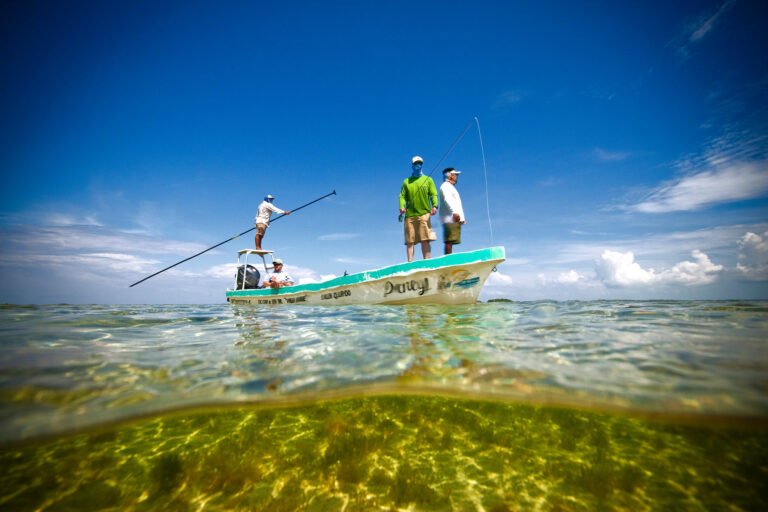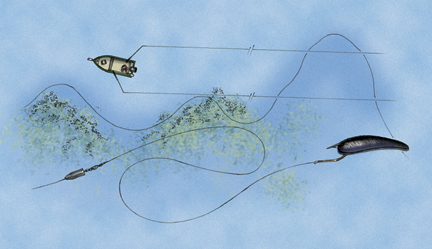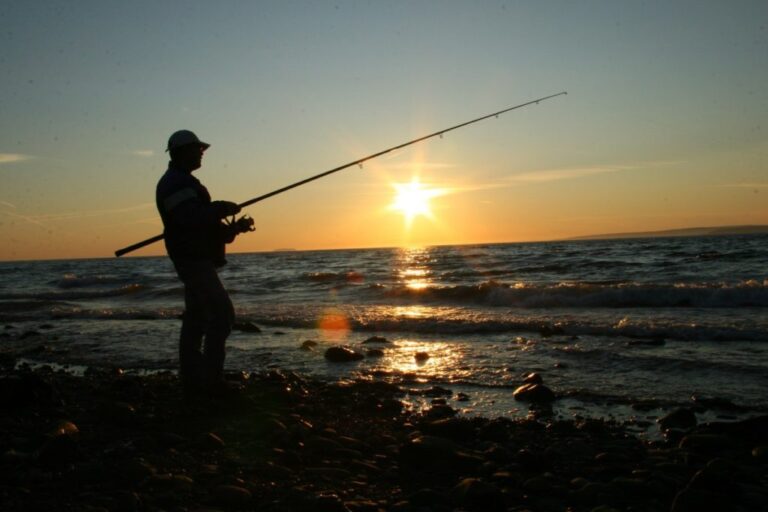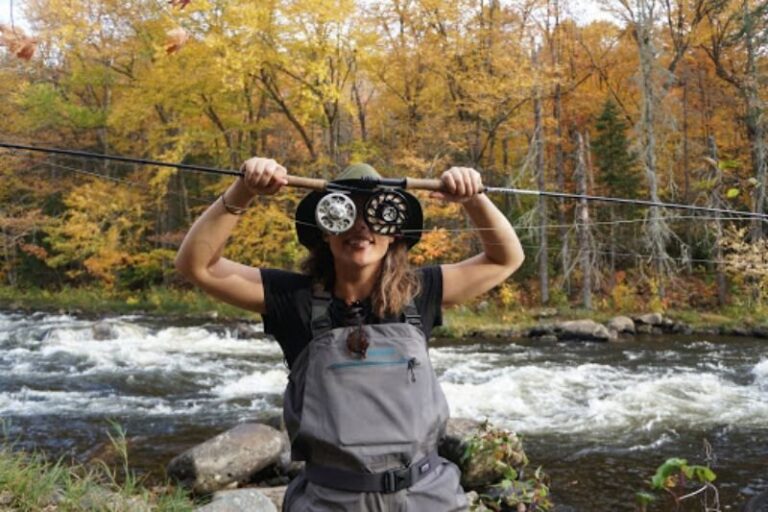Handling changing weather conditions during flats fishing requires staying informed and adaptable. The ability to monitor the weather forecast, pack appropriate gear, and adjust fishing techniques accordingly is essential for success.
By keeping an eye on the current conditions, preparing for potential changes, and being flexible in your approach, you can make the most of your flats fishing experience and increase your chances of a successful outing. Navigate the ever-changing weather patterns with confidence and enjoy the exhilaration of fishing in various conditions.

Credit: fishingbooker.com
How Weather Conditions Affect Flats Fishing Success
Weather conditions play a crucial role in determining the success of flats fishing. The changing weather patterns can greatly influence your fishing plans and the behavior of fish in the flats. Understanding the connection between weather and fish behavior is essential in order to have a successful day on the water.
In this section, we will explore the importance of weather conditions in flats fishing, how changing weather patterns can disrupt your fishing plans, and the connection between weather and fish behavior.
Importance Of Weather Conditions In Flats Fishing
- Weather conditions such as wind, temperature, and barometric pressure can significantly impact flats fishing.
- Wind direction and speed can affect the movement and behavior of fish, as well as the visibility of the water.
- Temperature variations can influence the metabolism and feeding patterns of fish, making them more active or less likely to bite.
- Barometric pressure changes can affect the fish’s swim bladder, causing them to move to different depths or become more lethargic.
How Changing Weather Patterns Can Disrupt Fishing Plans
- Sudden weather changes, such as rainstorms or strong winds, can force anglers to alter their fishing plans or even cancel their trips.
- Heavy rainfall can lead to muddy water conditions, reducing visibility and making it more challenging to locate fish.
- Strong winds can create choppy water conditions, making it harder to spot fish and present baits or lures effectively.
- Rapid changes in temperature or barometric pressure can cause fish to become less active or change their feeding patterns.
Understanding The Connection Between Weather And Fish Behavior
- Fish are sensitive to environmental cues, and weather conditions can significantly influence their behavior.
- In warm weather, fish may become more active and move to shallower waters to feed, while colder temperatures can push them to seek deeper, warmer waters.
- Bright sunny days may cause fish to seek cover or deeper areas to avoid the intense sunlight, whereas overcast days may encourage them to venture into shallower flats.
- The presence of wind can lead to increased wave action and current, which can create feeding opportunities for fish.
Remember, being aware of the importance of weather conditions, anticipating changing weather patterns, and understanding their connection to fish behavior are key factors in ensuring a successful flats fishing experience. So, keep a keen eye on the forecast and adapt your fishing strategy accordingly for a fruitful day on the flats!
Preparing For Changing Weather Conditions
Preparing for changing weather conditions is essential when it comes to flats fishing. As any experienced angler knows, weather can have a significant impact on the success and safety of your fishing trip. By monitoring weather forecasts and updates, adapting your fishing strategies, and ensuring you have the right gear and equipment, you can effectively handle changing weather conditions and optimize your fishing experience.
Monitoring Weather Forecasts And Updates
Keeping a close eye on weather forecasts and updates is crucial before heading out for a flats fishing adventure. Here are some key points to consider:
- Check the local weather forecasts: Stay updated on the latest weather predictions for your fishing location. Websites, smartphone apps, and even social media profiles of reliable meteorological sources can provide valuable information.
- Pay attention to wind and tide forecasts: Wind and tidal patterns can greatly impact your fishing conditions. Look for wind speed and direction forecasts, as well as tidal tables, to help you plan your fishing trip accordingly.
- Observe weather radar and satellite imagery: Radars and satellite imagery can provide real-time information on cloud cover, precipitation, and storm systems. Keep an eye on these to avoid unexpected weather surprises.
Adapting Fishing Strategies Based On Forecasted Weather Changes
Once you have an understanding of the weather conditions you may encounter, it’s important to adapt your fishing strategies to maximize your chances of success. Here are some key points to consider:
- Adjust your fishing schedule: If adverse weather conditions are forecasted, consider rescheduling your fishing trip. Strong winds, thunderstorms, or heavy rain can make fishing challenging and potentially dangerous.
- Plan for different water conditions: Changing weather can lead to changes in water clarity, temperature, and salinity. Research the effects of specific weather conditions on the fish species you are targeting and modify your fishing techniques accordingly.
- Explore sheltered areas: In the event of strong winds or stormy weather, seek out sheltered areas such as mangroves, coves, or sheltered bays. These areas can provide protection from harsh weather conditions and improve your chances of finding fish.
Essential Gear And Equipment To Handle Changing Weather Conditions
Having the right gear and equipment is vital when facing changing weather conditions during flats fishing. Here are some essentials to consider:
- Clothing: Dress in layers to accommodate varying temperatures and weather conditions. Moisture-wicking clothing can help keep you comfortable throughout the day. Don’t forget to bring a waterproof jacket and hat to protect yourself from rain or intense sunlight.
- Sun protection: Ensure you have a high-quality sunscreen, polarized sunglasses, and a wide-brimmed hat to shield yourself from harmful uv rays. Sunburn and eye strain can quickly ruin your fishing experience.
- Safety equipment: Carry essential safety gear, such as life jackets, a first aid kit, and a marine radio or cellphone in a waterproof case. This way, you are prepared for any emergency situation.
- Fishing tackle: Adjust your tackle based on the weather conditions. Windy conditions may require heavier lures or flies, while calm conditions may call for more subtle presentations. Be sure to have a variety of baits, hooks, and leaders suitable for different weather scenarios.
By closely monitoring weather forecasts, adapting your fishing strategies, and being equipped with the right gear, you can confidently handle changing weather conditions and make the most of your flats fishing adventures. Remember, flexibility and preparation are key to ensuring a safe and successful day on the water.
So, get out there, embrace the unpredictable nature of the weather, and enjoy the thrill of fishing in various conditions.
Techniques For Fishing In Various Weather Conditions
Sunny And Calm Weather:
When you’re fishing in sunny and calm weather conditions, there are several techniques that can help you maximize your chances of success.
- Choosing the right lures and bait: Opt for brightly colored lures that can attract fish even in clear water. Additionally, using live bait such as shrimp or small fish can be highly effective.
- Working with shadows and hiding spots: Look for areas of shade, such as mangroves or structures, where fish might seek cover. Casting near these spots can increase your chances of getting a bite.
- Adjusting fishing techniques for increased visibility: In clear water, fish can easily see your movements. Use lighter line and leaders, position yourself carefully, and avoid unnecessary splashing to prevent scaring away fish.
Windy Weather:
When dealing with windy weather, it’s essential to adapt your fishing techniques to make the most of these conditions.
- Using wind to your advantage: Look for areas where the wind is blowing into structure or along points. This creates current and concentrates food sources, increasing the likelihood of finding feeding fish.
- Adjusting casting techniques for accuracy and distance: Cast against the wind to achieve greater accuracy and distance. Utilize techniques such as side casting or the bow-and-arrow cast to overcome windy conditions.
- Identifying wind-driven current patterns: Wind often creates current that moves baitfish and helps predators locate them. Pay attention to the direction and velocity of the wind to determine where fish might be positioned.
Rainy Weather:
Don’t let rainy weather dampen your fishing experience. Here are some tips for making the most of it.
- Key considerations when fishing in the rain: Rain can wash terrestrial insects into the water, creating a feeding frenzy for fish. Look for areas where streams or creeks flow into the flats as these are prime feeding zones.
- Using rain as a camouflage: Rainfall reduces visibility for fish, making them less cautious. Take advantage of this by casting closer to fish or using larger and noisier lures that can attract attention despite the rain.
- Targeting sheltered areas and structures: Seek out areas where fish can find shelter from the rain, such as channels, mangroves, or overhangs. These provide fish with protection and a place to wait for potential prey.
Cloudy And Overcast Weather:
When the weather is cloudy or overcast, different strategies can help increase your chances of a successful fishing outing.
- Adjusting bait and lure presentation: Cloudy conditions reduce the visibility of lures, so opt for larger and more vibrant offerings that can attract fish from a greater distance.
- Understanding how light conditions affect fish behavior: Fish tend to be more active and willing to feed in low light conditions. Take advantage of this by fishing shallower areas or targeting fish that may move into shallows during these lighting conditions.
- Finding fish in deeper or darker areas: Fish may seek deeper or darker areas where they feel more secure. Look for drop-offs, channels, or areas with submerged structures where fish might be hiding.
Hot And Humid Weather:
Fishing in hot and humid weather requires different strategies to cope with the effects of heat on fish activity.
- Understanding the effects of heat on fish activity: As water temperatures rise, fish become less active and seek cooler areas. Adjust your expectations and target species that are more tolerant of warmer water.
- Targeting cooler and shaded areas: Look for areas with shade or cover, such as mangroves, docks, or structures, where fish can find relief from the heat. They may be more inclined to bite in these areas.
- Adjusting fishing times during extreme heat: Consider fishing during the cooler parts of the day, such as early morning or late afternoon, when fish are more likely to be active. Take breaks when the heat becomes too intense to avoid stressing the fish.
Remember, practicing these techniques and adapting your fishing approach to changing weather conditions can greatly improve your chances of success. Stay versatile, observant, and open to experimenting with different strategies to optimize your flat fishing experience.
Safety Tips For Flats Fishing In Changing Weather Conditions
When it comes to flats fishing, weather conditions can sometimes be unpredictable. As an angler, it’s essential to be well-prepared and informed to ensure your safety on the water. Here are some important safety tips to keep in mind when faced with changing weather conditions:
Monitoring Weather Changes While On The Water
- Regularly monitor weather updates: Check the forecast before heading out and keep an eye on any changes throughout your fishing trip. Many weather apps provide real-time updates and alerts for your location.
- Be observant of the sky: Look for signs of changing weather conditions, such as darkening clouds, shifting winds, or sudden drops in temperature. These can indicate the potential for storms or other dangerous weather events.
- Stay connected: Carry a portable weather radio to receive up-to-date information, especially if you’re in an area with limited cell phone reception. It will help you stay informed about any severe weather alerts or warnings.
Knowing When To Seek Shelter Or Return To Shore
- Plan an escape route: Before setting out, familiarize yourself with the nearest safe shelters or marinas where you can take refuge in case of sudden weather changes. Identify these locations on a map or gps device.
- Prioritize personal safety: If weather conditions worsen and you feel unsafe, it’s essential to make the decision to seek shelter or head back to shore promptly. Don’t take unnecessary risks, as your safety should always be the top priority.
- Assess the situation: Evaluate the direction and intensity of the weather conditions. Thunderstorms, strong winds, or heavy rainfall can make the water hazardous for both you and your boat. If in doubt, it’s better to err on the side of caution.
Understanding The Risks Of Lightning And Thunderstorms
- Stay informed about lightning risks: Lightning is a significant danger when engaging in outdoor activities, especially while on the water. Familiarize yourself with the signs of an approaching thunderstorm and be ready to take action.
- Seek shelter when thunder is heard: If you hear thunder, it means lightning is within striking distance. Move to a safe location immediately, such as a sturdy building or an enclosed boat with a lightning protection system. Avoid open spaces, high points, and isolated structures.
- Wait for appropriate conditions: Don’t rush to return to the water after a thunderstorm passes. Lightning can continue to pose a risk for some time afterward. Wait at least 30 minutes after the last thunderclap before resuming your fishing activities.
Remember, being well-prepared and proactive is crucial when dealing with changing weather conditions during flats fishing. Stay updated, trust your instincts, and prioritize safety above all else. By following these safety tips, you can enjoy your fishing experience while minimizing the risks associated with unpredictable weather.
Conclusion
Adapting to changing weather conditions is essential for successful flats fishing. By staying alert to the weather forecast, understanding how different weather variables affect fish behavior, and adjusting your tactics accordingly, you can greatly increase your chances of a productive day on the water.
Utilize the variety of tools available, such as weather apps and tide charts, to stay informed and plan your trips effectively. Pay attention to factors like wind direction, cloud cover, and water temperature, as they can significantly impact fish activity.
Experiment with different bait and lure presentations, and be prepared to make adjustments in real-time based on the conditions you encounter. Remember to prioritize safety and avoidance of extreme weather conditions. By mastering the art of adapting to changing weather, you’ll become a more versatile and successful flats angler.
So don’t let ever-changing weather conditions deter you from enjoying this thrilling and rewarding fishing experience!




